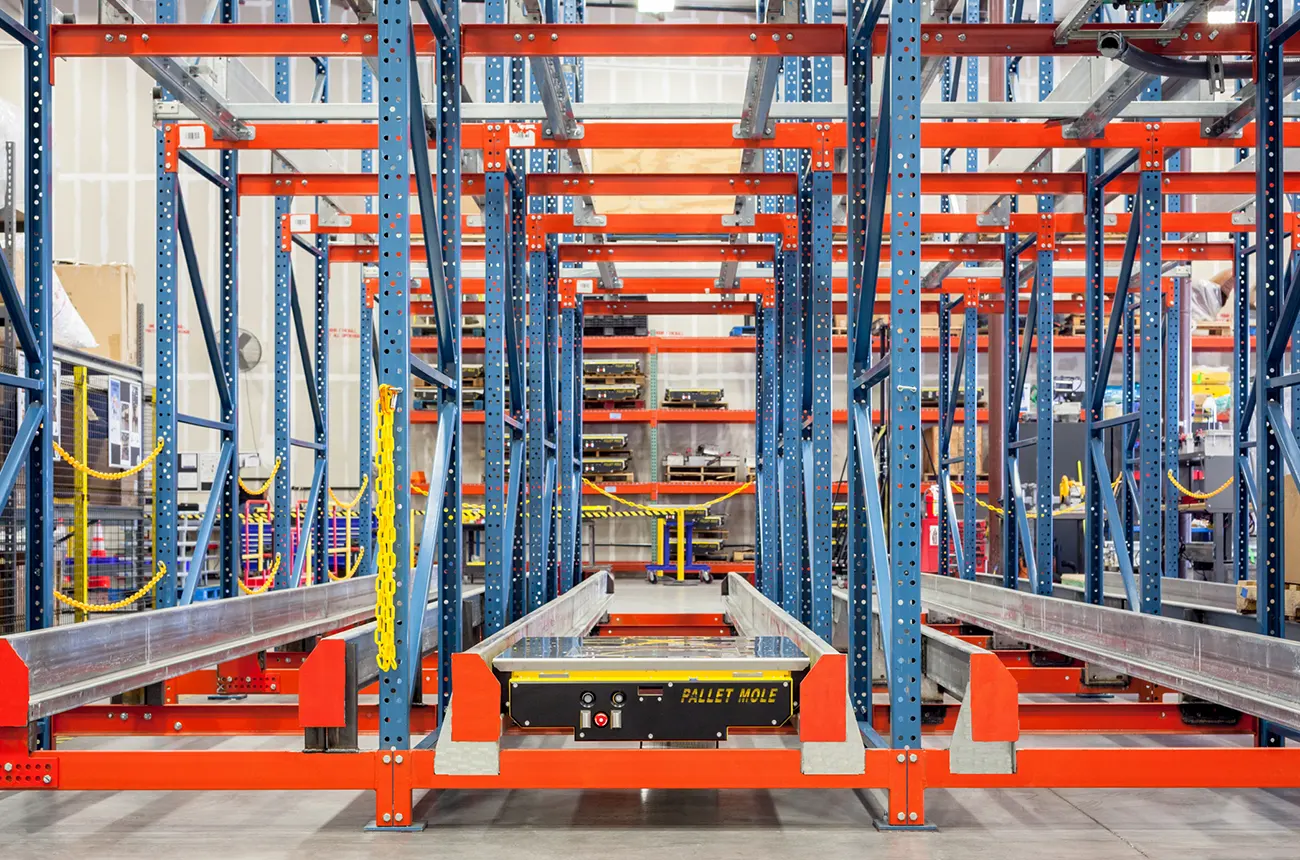Beyond Racks: Inside a Spacemaker Installation — From Design to Go-Live
Installing a Spacemaker system is more than a hardware deployment — it’s a fully coordinated transformation of how a facility stores, moves, and manages pallets. While the complexity varies by site, every installation follows a set of defined phases to ensure precision, safety, and long-term success.
Here’s what that journey looks like:
Phase 1: Site Discovery & System Design
Every project begins with site evaluation and data discovery. Spacemaker engineers assess floor plans, storage requirements, temperature conditions, and throughput goals. The result is a custom design proposal, including layout diagrams, recommended shuttle types (e.g., DualAxis Pro®, QuadAxis Pro®, or Pallet Mole®), and a phased implementation strategy.
Phase 2: Engineering & Manufacturing
Once the design is approved, Spacemaker begins engineering documentation, mechanical drawing validation, and control logic programming. In parallel, the physical system is built—rails, shuttles, power units, and cabinets—according to the site’s specs. Customizations (e.g., freezer-rated components or high-throughput shuttle logic) are applied at this stage.
This phase also includes digital configuration of the MGM® system and APIWare® integrations for ERP/WMS/WES compatibility.

Phase 3: Site Readiness & Staging
Ahead of installation, Spacemaker collaborates with the customer on site prep, including structural readiness, electrical provisioning, and staging plans. Equipment is shipped to the site with labeled components and installation sequencing optimized for minimal disruption to ongoing operations.
Phase 4: Mechanical & Electrical Installation
Installation crews assemble racking rails, place charging stations, mount control cabinets, and lay all signal and power lines. All installations follow strict tolerances and safety guidelines, particularly for freezer environments or high-density ambient zones.
By the end of this phase, the physical system is in place and powered, ready for commissioning.

Phase 5: Commissioning & Integration
System commissioning includes:
- Activating shuttles and calibrating sensors
- Connecting MGM® to the control cabinet and interface
- Verifying ERP/WMS/WES data flow via APIWare®
- Testing pallet movements, cycle times, and logic controls
Each shuttle undergoes movement tests, battery validation, and software handshake routines. Spacemaker’s technical team configures HMI dashboards and ensures full operational readiness.
Phase 6: Training & Handover
Before going live, Spacemaker delivers onsite training for operators, supervisors, and IT staff. This includes shuttle controls, mobile app usage, maintenance routines, and basic troubleshooting.
Clients receive a full documentation package (SOPs, safety guidelines, support contact sheets) and access to the Spacemaker support portal. The project concludes with a joint walkthrough and formal system handover.
Why It Works: Process-Driven Precision
Spacemaker’s phased approach ensures every project—from food storage to pharma distribution—is executed with repeatable quality and flexibility. Whether retrofitting part of an existing facility or delivering a greenfield turnkey system, the process scales with each client’s unique needs.

